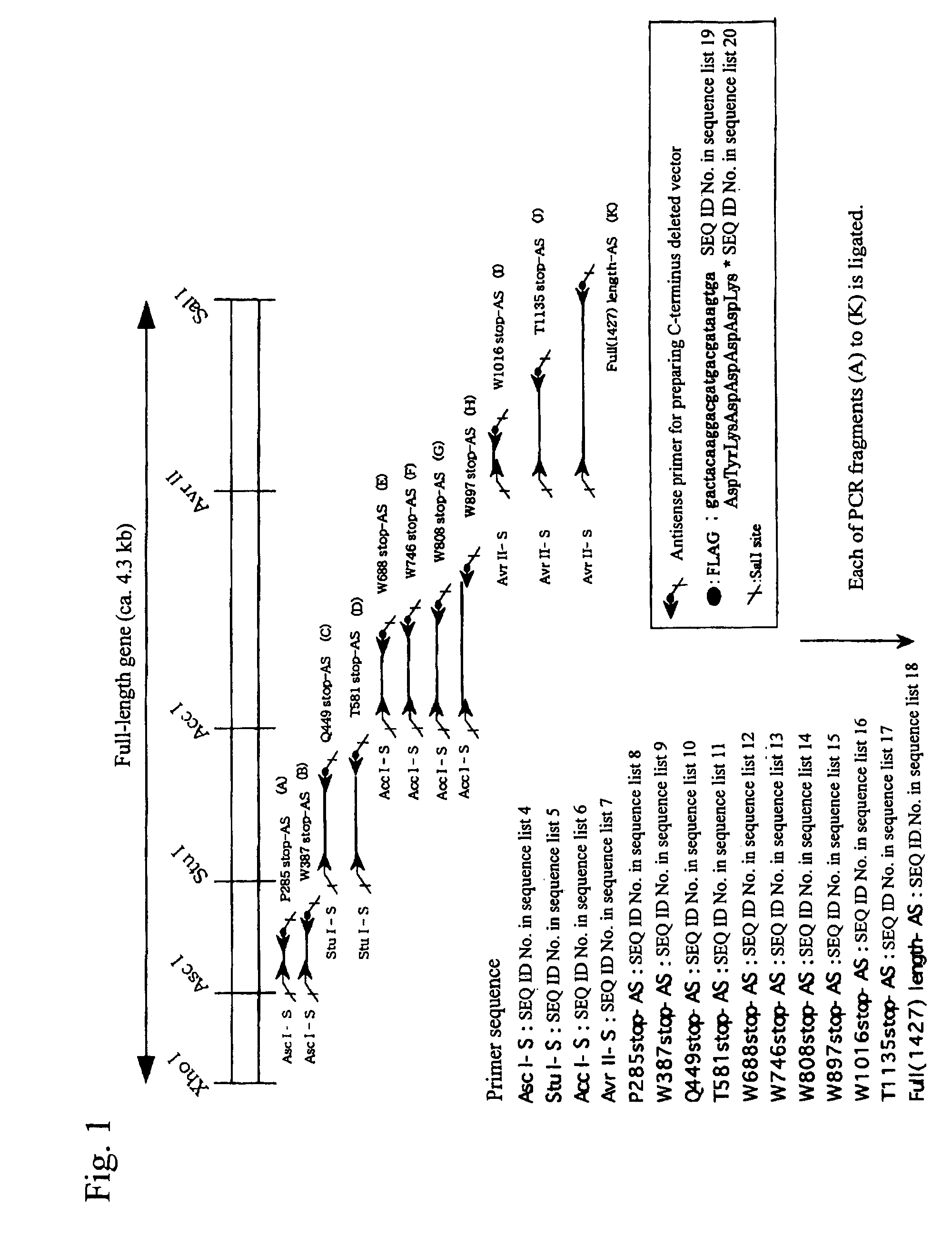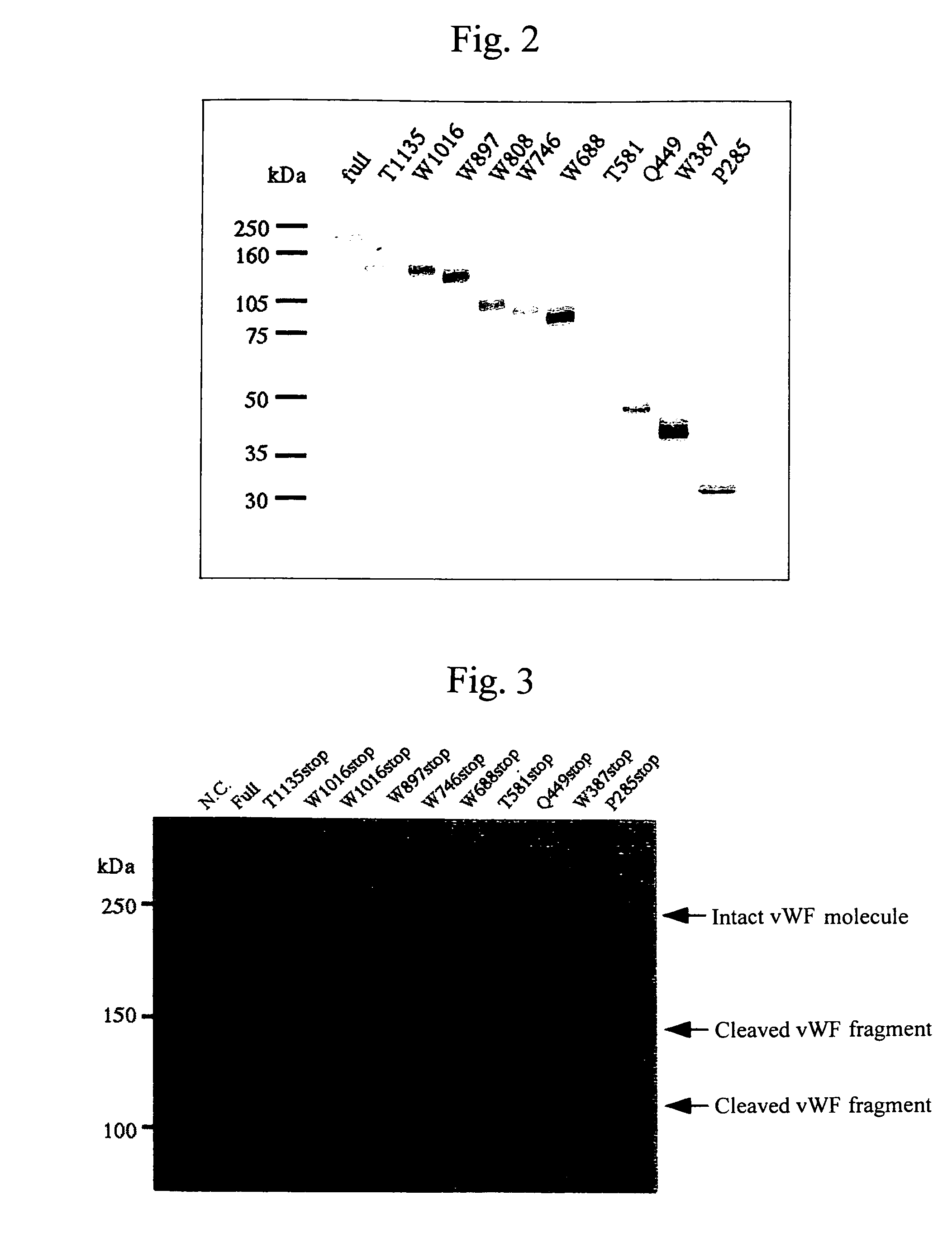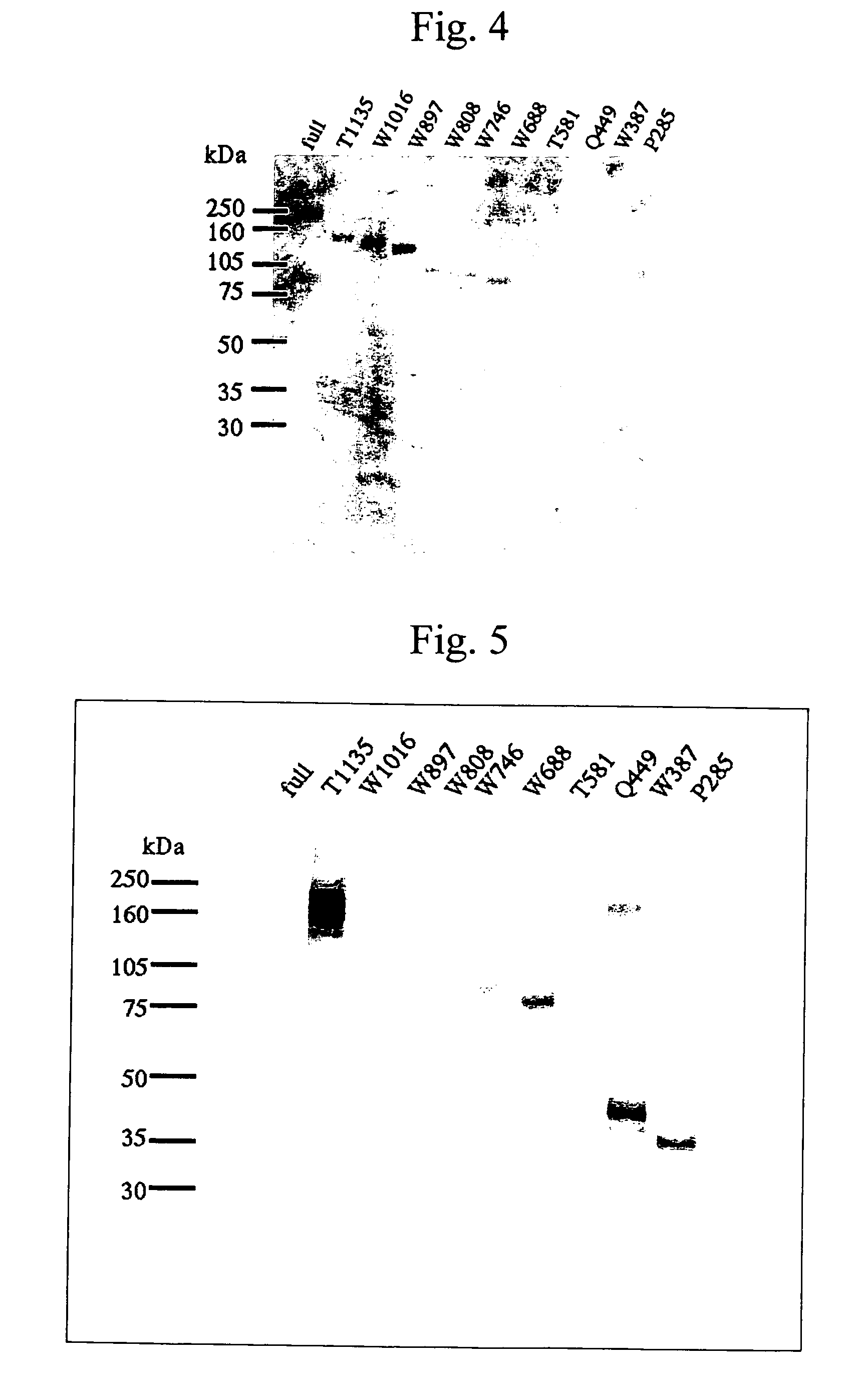Antibody against von Willebrand factor cleaving enzyme and assay system using the same
a technology of von willebrand factor and assay system, which is applied in the field of protein, can solve the problems of not having an efficient and high-purity purification process for this enzyme, no qualitative method has been established, and no method for diagnosing an autoantibody-positive patient to this enzyme has been established
- Summary
- Abstract
- Description
- Claims
- Application Information
AI Technical Summary
Benefits of technology
Problems solved by technology
Method used
Image
Examples
example 1
Preparation of Polyclonal Antibodies (PoAb)
[0116]Antigen proteins partially purified from human plasma, or synthetic peptides having a part of the amino acid sequence (exemplified by peptides of SEQ ID No. 2 or SEQ ID No. 3) bound to a suitable career substance (KLH etc.)(those appended with Cys to N- or C-terminus in order to facilitate KLH addition), or an expression vector into which was introduced a recombinant protein or a gene encoding the recombinant protein were transfected to a mouse or a rabbit subcutaneously, intradermically or intramuscularly according to a conventional method (Current Protocols in Molecular Biology: Chapter 11 immunology, Antibody Engineering: A PRACTICAL APPROACH Edited by J. McCAFFERTY et al. or ANTIBODY ENGINEERING second edition Edited by Carl A. K. BORREBAECK etc.) to establish a monoclonal antibody expression hybridoma and create polyclonal antibodies (PoAb). As for PoAb, three types, i.e., PoAb1, PoAb2 and PoAb3, were prepared by the transfection...
example 2
Production of Monoclonal Antibody (MoAb)
[0117]Balb / c mice immunized with recombinantly derived ADAMTS-13 and peptides of SEQ ID No. 2 or SEQ ID No. 3 using KLH as a career to the hind leg as a first immunization in the presence of Freund's complete adjuvant were prepared. ADAMTS-13 may be prepared by the method described in WO 02 / 088366.
[0118]One week after inoculating an amount from 1 μg to 10 μg equivalent of the prepared antigen once, cells were sampled from the femoral lymph node of the hind leg or spleen of the mice according to a conventional method. Cells obtained from two mice were mixed with myeloma cell P3X63Ag8U.1 (P3U1)(ATCC accession number CRL-1597: Curr. Top. Microbiol. Immunol., vol. 81, p. 1 (1978)) respectively at a ratio of 1 to 1-2 cells, centrifuged (1,500 rpm, 5 minutes) to remove the supernatant and the precipitated cell lump was loosened enough, and 1 ml of polyethylene glycol solution (45% polyethylene glycol 4000, 55% RPMI culture medium) warmed at 37° C. b...
example 3
Production of C-terminal Deletion Variant of ADAMTS-13
[0122]By the strategy shown in FIG. 1 utilizing the full-length vWF cleaving enzyme gene cloning vector (pCR2.1vWFCP), genes expressing the variants in which domains were deleted one by one from the C-terminus (Full 1427stop, T1135stop, W1016stop, W897stop, W808stop, W746stop, W688stop, T581stop, Q449stop, W387stop, P285stop: wherein each number shows the number of amino acid residues from Met encoded by the start codon ATG to the termination codon, showing the site to which the FLAG epitope was appended (DNA sequence: gactacaaggacgatgacgataagtga (SEQ ID No. 19 in the sequence list), amino acid sequence: Asp Tyr Lys Asp Asp Asp Asp Lys (SEQ ID No. 20 in the sequence list))) were prepared using primers of the full-length and SEQ ID Nos. 4 to 18 in the sequence list, and incorporated into the pCAG expression vector (Niwa, H., et al. Gene vol. 108, 193-199), and transfection was carried out in the following procedures using the Hela...
PUM
| Property | Measurement | Unit |
|---|---|---|
| concentration | aaaaa | aaaaa |
| pH | aaaaa | aaaaa |
| pH | aaaaa | aaaaa |
Abstract
Description
Claims
Application Information
 Login to View More
Login to View More - R&D
- Intellectual Property
- Life Sciences
- Materials
- Tech Scout
- Unparalleled Data Quality
- Higher Quality Content
- 60% Fewer Hallucinations
Browse by: Latest US Patents, China's latest patents, Technical Efficacy Thesaurus, Application Domain, Technology Topic, Popular Technical Reports.
© 2025 PatSnap. All rights reserved.Legal|Privacy policy|Modern Slavery Act Transparency Statement|Sitemap|About US| Contact US: help@patsnap.com



